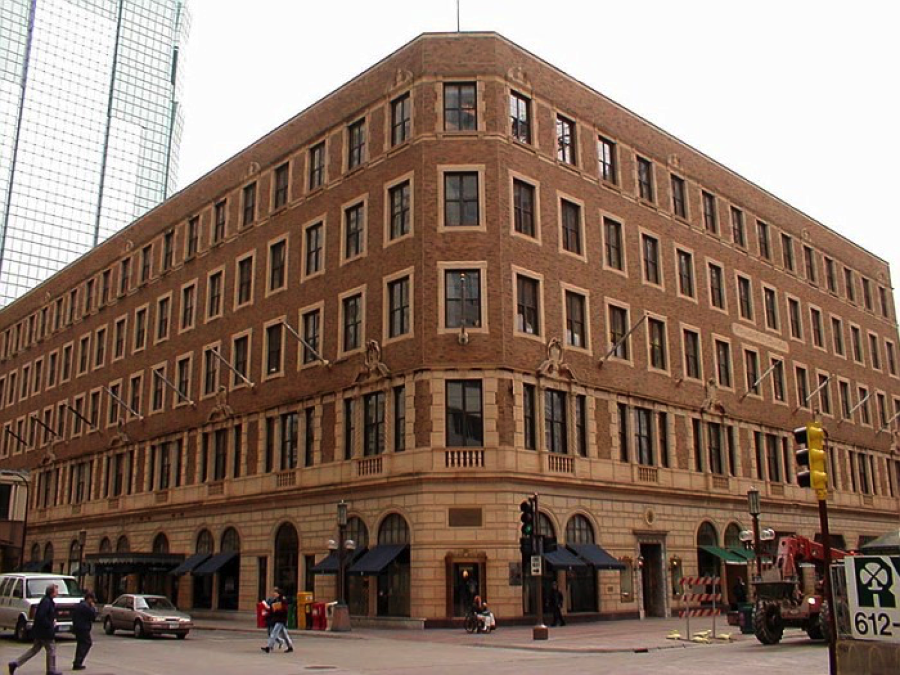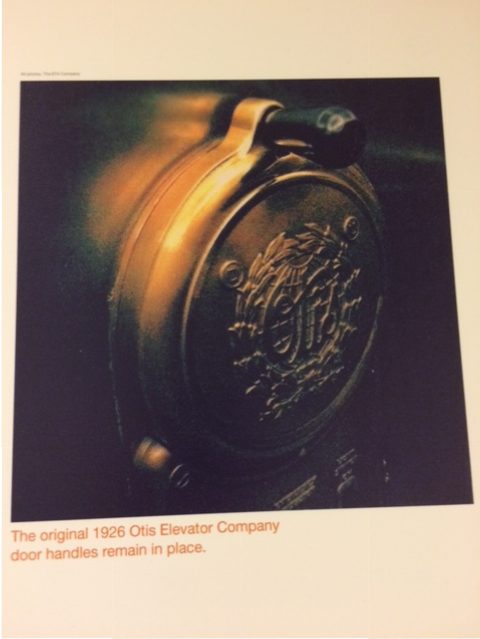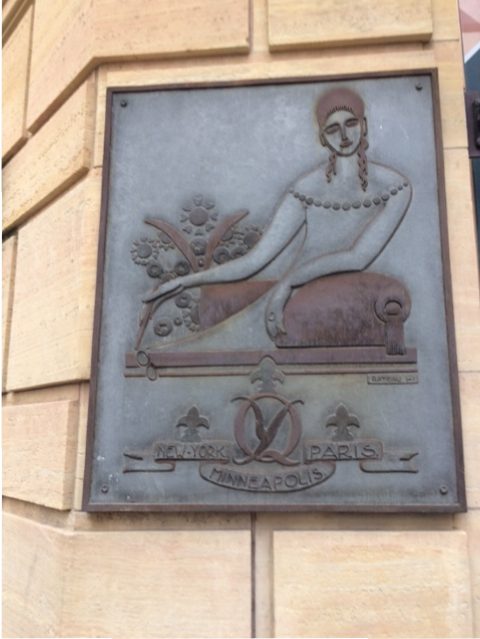After we walked out of Macy’s Department store on Saturday afternoon, we continued down the mall to the majestic, limestone “Renaissance Revival” Young Quinlan building. When looking online for information to use in a previous post I discovered there is a “mini-museum” of Young Quinlan’s memorabilia in the building so we checked it out.

We entered the store, which is now Hudson Jewelers, on 9th and Nicollet. It’s very beautiful inside, as well as outside, with a wide staircase leading to the mezzanine level that was a part of Young-Quinlan. We rode the elevator with the original “door handle” that I remember was operated by a white-gloved woman back in the day. We got off on the 2nd floor where there were poster displays and cases filled with photos, boxes and old merchandise. The store opened in this building in 1925, the year it was built, and closed its doors for good in 1985.

Here are excerpts from the displays which we found very interesting.
“Minneapolis in 1894 was still a town on the edge of the prairie with a population of 190,000 people. Nicollet Avenue was lit with gas lamps and paved with red cedar blocks.
Two young and ambitions retailers, Fred D. Young and Elizabeth Quinlan, conceived the daring idea of opening an exclusive store for “ladies’ ready-to-wear.” At the time there was only one other store like that in the country, in New York City.”
“The building was designed by the renowned New York architect Frederick Lee Ackerman. It was built for the then-staggering price of $1.25 million.”
“Opening day drew a crowd of over 20,000 0people for Elizabeth’s “housewarming party.”
“The first day, they sold out of their entire inventory of coats, capes, mantles*, wrappers*, and gloves.”
“With its Old world grace and elegance, it quickly became a landmark in the heart of the city.”
*Mantle: a loose sleeveless garment worn over other clothes. Wrapper: an article of clothing worn wrapped around the body.

I’m thinking I’m missing the old grace and elegance that we no longer find in the department stores in our shopping centers and outlet malls.